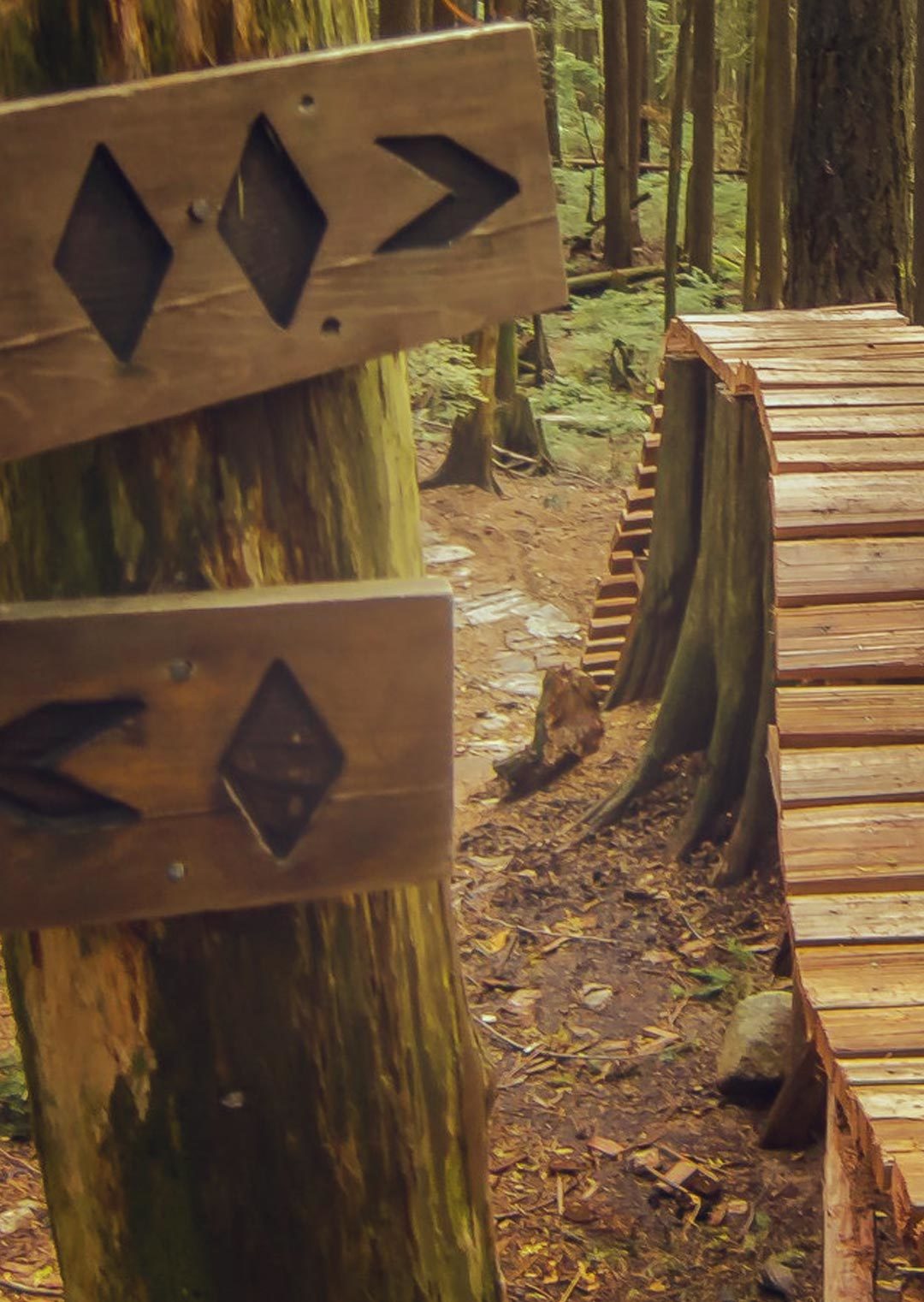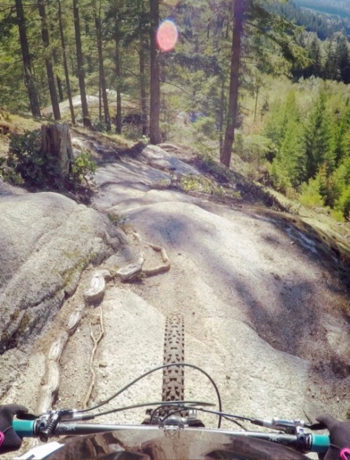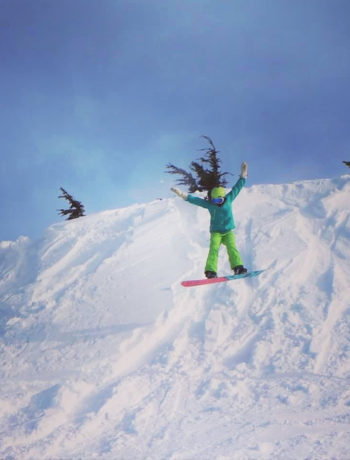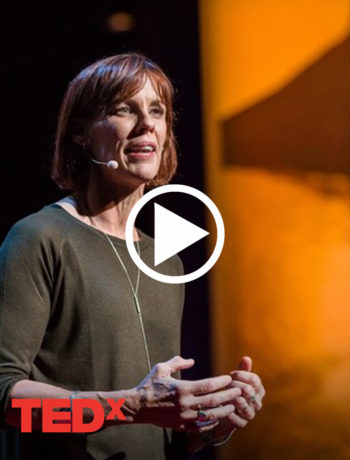Racing Heart. Shortness of Breath. Butterflies.
Peddling up Mt. Fromme on our twin Santa Cruz Bronson’s, my friend Craig is taking me to Upper Oil Can bike trail. He tells me I’m ready to tackle some technical woodwork. I’m so excited to face the severe danger looming on the horizon!…or maybe what I feel is anxiety and I shouldn’t do this today—it’s so hard to tell the difference between emotions sometimes. Anxiety and excitement are completely different emotions, one positive, one negative—but are they different, really?
Harnessing your Anxiety
Anxiety isn’t fun. And to make things worse, it often follows with well-intentioned friends and family who suggest you just calm down and get over it. I can tell you first-hand that you’re not going to magically make it go away. But there IS an opportunity to harness these emotions and put them to good use. Anxiety and excitement are defined as arousing emotions—the heart beats faster, cortisol surges, and the body prepares for action. The only difference is that excitement is being in the moment and focusing on all the ways something could go well, whereas anxiety focuses on the future’s impending doom.
Tune in with mindfulness
Our minds aren’t always great at interpreting our bodies’ signals. To be healthy and functional, we need to be able to feel and connect to all of our emotions at different times, whether it’s sadness, joy, hunger, fear and love, and so on. The problem is that over our lifetime we’ve been through varying amounts of trauma (and I don’t necessarily mean the big life-changing trauma). These little traumas like a bike crash, childhood wound or love rejection create memories in our body that can be triggered at any time. When we’re triggered, we panic and the survival brain takes over and shuts down higher brain functioning, and you lose touch with you, for the sake of survival.
The disconnection between the brain and body happens when the body, because of various triggers, is thrown into an unnecessary state of survival mode that doesn’t correspond to the actual event currently taking place. The lingering state of fear in you surfaces and attaches to the new situation. A good example of this is watching a scary movie: You lounge in the safety of your living room, experiencing the physical and emotional sensations of fear (racing heart, anxiety, sweating), but you’re not in any real danger.
The secret to feeling less anxious and fearful is in the ability to tune in and be mindful. In midst of your discomfort there’s always a hint, in your heart and gut, of a deeper layer of joy; or a clue to real danger. If you see a cougar approaching you, you should be feeling fear and anxiety—that’s real danger! Conversely if you’re walking into a crowd, dropping into a new trail, or facing the potential of falling in love, this type of anxiety is irrational and surfaces when you aren’t in any specific danger, but your body triggers an emotional response.
The anxiety sweet spot
Skills and wisdom arrive on the coattails of an intense moment. Without proper use, your emotions will be disruptive to this growth. Take fear for example, it can be looked at in two ways: 1) that you should stop from proceeding, or 2) that you should focus on your skills to ensure efficiency and effectiveness before proceeding. Like great athletes, if you can learn how to redirect anxiety into motivation and excitement, you’ll make remarkable progress in your sport and your well-being.
Research shows most people have an anxiety sweet spot where they have enough anxiety to feel alert, but not enough to feel debilitated. A proven way to practice redirecting your anxiety is to not attempt to suppress it, but instead, harness it. When you tell yourself, “Just relax” and “Calm down” you’re sending a signal to your brain that something is wrong and there’s stress; in a sense, you are reinforcing the negative emotion. But by telling yourself “I’m excited!” and that the sensations you’re feeling is your body getting amped-up for the task at hand, you transform negative energy into positive energy; and performance follows.
F.E.A.R Face Everything and Ride
Feeling ready is an action to act upon, not a condition to wait for. Ready is the courageous act of facing fears that are always present in everyone, until the fear no longer controls or limits you. By working on self-awareness and harnessing your anxiety, you’ll become aware of what is actually controlling you, sabotaging your growth, limiting your experiences and your snuffing out your desires.
Tips for harnessing your anxiety
Start a journal
Whether you’re facing fears on your bike, in your career or in your relationships, journaling about your emotions and intuition will help you learn to recognize what exactly you’re feeling, when your intuition is speaking to you, and what the outcome of your actions resulted in. Write down details of your experiences and describe how you were feeling. This will help you reflect, look back and consider the good, the bad, and how you grew from both.
Visualize a successful outcome
My friend Craig once shared a story about when he was a rafting guide. He explained that “When you’re headed for a dangerous eddy you must take a quick assessment, trust your skills and then make a move; because the longer you stare at the danger, the longer and more likely you’ll get stuck in it.” This is the same in mountain biking and in life. Visualize a successful conclusion and your unconscious will deliver a plan. If you only imagine a negative outcome, then your mind will become confused and think that’s the outcome you want, because that’s where the focus is. Focus on what you want to happen, not what you don’t want to happen.
Be brave. Don’t be stupid.
There is a difference between being stupid and facing your fear. When my grandma sees my bike videos she thinks I’m being crazy and stupid. What she doesn’t understand is that when I’m dropping into a steep rock slab or tackling a new wooden structure, my decision to go-for-it is based on the progress and skills I’ve gained in the past. It doesn’t mean I’m never going to crash, but bravery takes a calculated chance on progression.
In your career, this could mean taking a chance on a rare opportunity that utilizes your skillset; not putting your life-savings into something you know nothing about. In relationships, this could mean following your heart, because you know there’s something deeply special between you and another; it doesn’t mean ditching your friends and running away to Italy because you found a hot, rich guy you know little about. Stupidity is reckless and lacks thought and intention.
Transforming fear into love
People are terrified of what they don’t understand, but fear is actually an opportunity to better understand the world and yourself. If instead of fighting what faces you, you embrace it and accept it—you often shift into feelings of peace, love and joy; the direct antidote to fear. But to overcome fear we need insight, which, according to Buddhism, involves profound reflection. That includes looking deeply at our fear and exploring it. This shows us the root of our fear and teaches us how to work with it.
Practice Centering
Centering is a technique that can help you quiet the mind, focus yourself and gain poise.
- Step 1: Set a clear intention. Your intention is your goal. What is your end game in spite of your anxiety? Whether it’s a performance achievement, work task or relationship goal, clearly articulate your intention.
- Step 2: Breathe mindfully. Use diaphragmatic breathing to increase oxygen, calm the body and get into a rhythm.
- Step 3: Scan & release tension. Negative thinking causes the muscles in your body to tighten. Scan your body slowly for tension; drop your shoulders, relax your face muscles, loosen your grip, and so on.
- Step 4: Visualize success. Visualize yourself accomplishing your intended goal. Imagine what it would look like and feel like to achieve your desired result.
- Step 5: Direct your energy. Now that you’re more aware and relaxed, you’ll have more focus and mind-body connection to go forth towards your goal.
The value of mindfulness practice
Mindfulness is a practice of bringing your attention into the present moment, into your body, and out of your monkey mind. We can’t expect the instantly wrangle our anxiety, but we can make an effort to train our minds, just like we train our bodies.
If we hang-out in fear and anxiety, we dwell in our own pain in the pain of the world. If we work to transform our anxiety and take steps to better understand our emotions, we can become more authentic and experience improved positive sensations like joy, love and peace.





No Comments